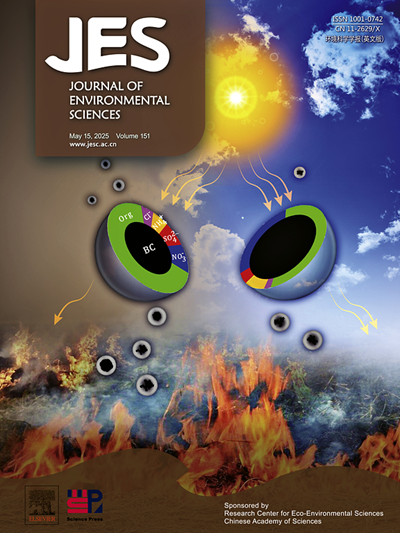Evolution of global O3-NOx-VOCs sensitivity before and after the COVID-19 from the ratio of formaldehyde to NO2 from satellite observations
IF 5.9
2区 环境科学与生态学
Q1 ENVIRONMENTAL SCIENCES
引用次数: 0
Abstract
Ozone production sensitivity is widely used to reveal the chemical dominant precursors of urban ozone rise. Here, we diagnose the impact of the decline in global human production activities level caused by the COVID-19 on ozone sensitivity through the ratio of formaldehyde (HCHO) and NO2 (FNR = HCHO/NO2) observations from the TROPOspheric Monitoring Instrument. We use a relative uncertainty threshold to clean the satellite FNR, and our satellite FNR present a good correlation (R = 0.6248) with U.S. Environmental Protection Agency observations. We found that the outbreak of the COVID-19 did not change the pattern of global ozone sensitivity, while the global regimes was transforming or strengthening to VOC-limited regimes due to the significant decline of human production activities levels. During the COVID-19, ozone sensitivity in Eastern China and East Africa continued to shift to VOC-limited regimes, while India, Western Europe and North America first moved to NOx-limited regimes, and then changed to VOC-limited regimes with the resumption of production and the increase in travel. The clustering results tell that urban ozone sensitivity tends to shift towards NOx-limited regimes as economic growing. The ozone formation in cities with lower FNR and per capita gross domestic product (GDP) are more sensitive to changes in VOCs, while cities with higher FNR and per capita GDP are more sensitive to variations in NOx. Cities with intermediate FNR and GDP are good evidence of the existence of transitional regimes. Our study identifies the driving role of urban economics in orienting the evolution of ozone sensitivity regimes.

臭氧生成敏感性被广泛用于揭示城市臭氧上升的化学主导前体。在此,我们通过 TROPOspheric Monitoring Instrument 观测到的甲醛(HCHO)和二氧化氮(NO2)的比值(FNR = HCHO/NO2)来诊断 COVID-19 导致的全球人类生产活动水平下降对臭氧敏感性的影响。我们使用相对不确定性阈值来清洁卫星 FNR,我们的卫星 FNR 与美国环境保护署的观测数据呈现出良好的相关性(R = 0.6248)。我们发现,COVID-19 的爆发并没有改变全球臭氧敏感性的模式,而由于人类生产活动水平的显著下降,全球制度正在向 VOC 限制制度转变或加强。在 COVID-19 期间,中国东部和东非的臭氧敏感性继续转向 VOC 限制模式,而印度、西欧和北美则先转向 NOx 限制模式,然后随着生产的恢复和出行的增加转向 VOC 限制模式。聚类结果表明,随着经济的增长,城市臭氧敏感性趋向于转向氮氧化物限制制度。净现值率和人均国内生产总值(GDP)较低的城市的臭氧形成对挥发性有机化合物的变化更为敏感,而净现值率和人均国内生产总值较高的城市对氮氧化物的变化更为敏感。无国民生产总值和人均国内生产总值处于中间水平的城市则很好地证明了过渡体制的存在。我们的研究确定了城市经济在引导臭氧敏感性制度演变方面的驱动作用。
本文章由计算机程序翻译,如有差异,请以英文原文为准。
求助全文
约1分钟内获得全文
求助全文
来源期刊

Journal of Environmental Sciences-china
环境科学-环境科学
CiteScore
13.70
自引率
0.00%
发文量
6354
审稿时长
2.6 months
期刊介绍:
The Journal of Environmental Sciences is an international journal started in 1989. The journal is devoted to publish original, peer-reviewed research papers on main aspects of environmental sciences, such as environmental chemistry, environmental biology, ecology, geosciences and environmental physics. Appropriate subjects include basic and applied research on atmospheric, terrestrial and aquatic environments, pollution control and abatement technology, conservation of natural resources, environmental health and toxicology. Announcements of international environmental science meetings and other recent information are also included.
 求助内容:
求助内容: 应助结果提醒方式:
应助结果提醒方式:


